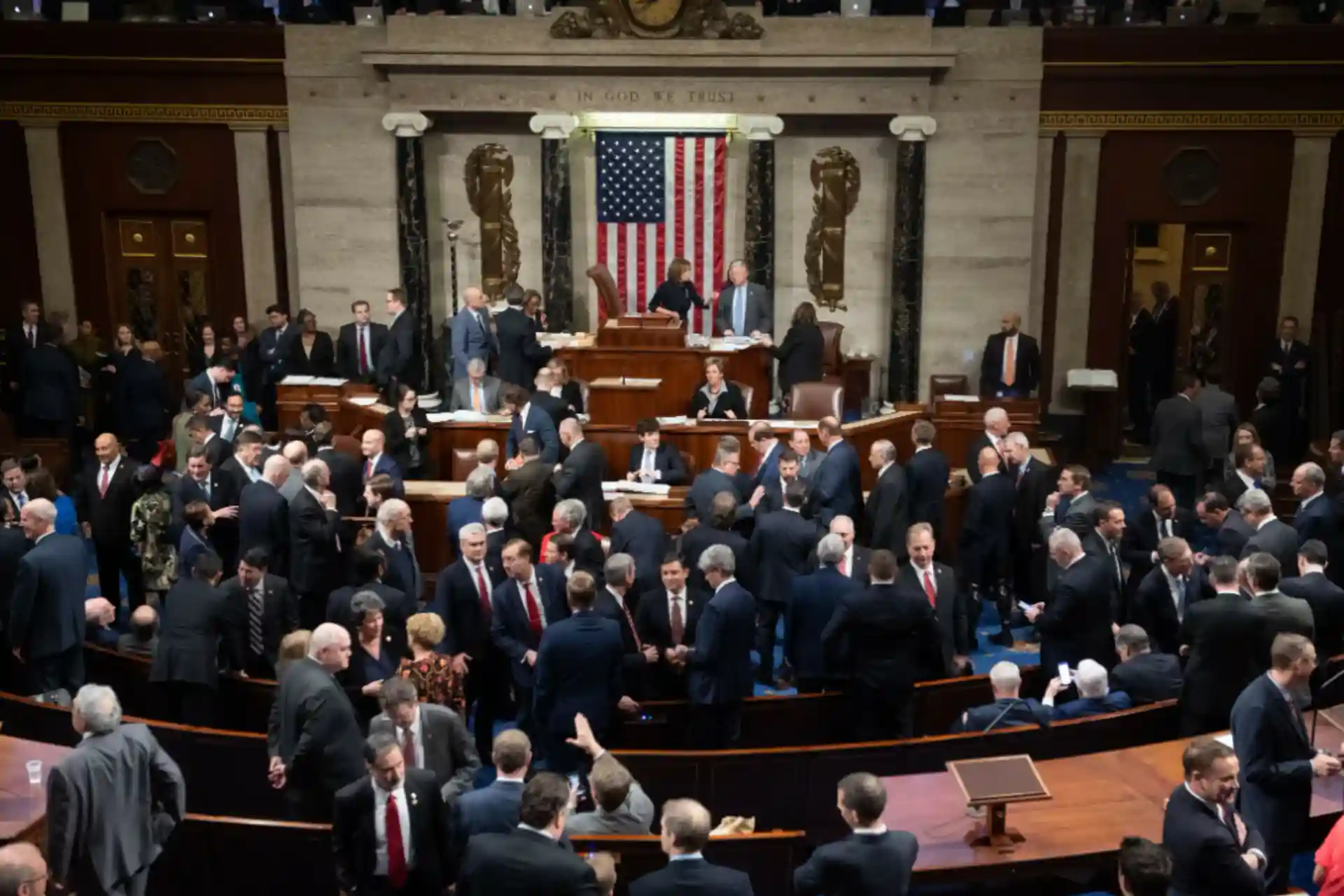How do Muslims who have achieved the "American dream" preserve their values?
As Arab and Muslim immigrants leave their countries, they make their way to the United States with a bright dream in their hearts. In the "Land of Opportunities" they aim to achieve an advanced education system, gainful employment and a prosperous life. But in this country of diversity and multiculturalism, immigrants are forced to balance Islamic values and customs with a new and alien way of life. In fact, the real test begins here. So, will Muslims be able to preserve their religion across the ocean or will integration prevail?
Needless to say, the situation becomes even more complicated when it comes to their children. It is here that private schools become a tool for protecting children and helping them adapt to society.
The US constitution provides for religious freedom and the protection of private educational institutions, including the establishment of private religious schools. Islamic schools are responsible for teaching a state-approved academic program. They can exercise these rights only if they meet the required academic standards.
The US Constitution guarantees freedom of religion and the right to establish private religious educational institutions. It also gives parents the right to choose appropriate education for their children, for example, private religious education.
The emergence of Islamic schools in the United States dates back to the 1960s and 1970s, the rise of immigration from Muslim countries and the expansion of Muslim communities. The number of such schools increased especially after the passage of the Hart-Seller immigration law in 1965.
The oldest of the Islamic schools is the Sister Clara Muhammad chain of schools in New York, founded in the 1960s, which was one of the first private religious schools in the United States to offer an integrated Islamic education alongside academic curricula.
Later, Islamic schools were established in other states of America . Children of a large number of Muslim families study there . The question arises: why do immigrants prefer to send their children to private schools? What makes them different from public schools?
The Al Jazeera TV journalist addressed these questions to parents living in America at the moment. They told the TV channel why they send their children to Islamic schools.
Nahla Mohammed said her family had already made up their minds about it. A young mother did not hesitate to transfer her daughter from an American public school to an Islamic school in Michigan. About 300,000 Muslim children study in this Dargah, half of them belong to the Arab nation. In Nahla's opinion, the Saturday-Sunday courses taught by mosques and Islamic centers teaching the Qur'an, the basics of faith, and the Arabic language are not enough to raise her daughter. In addition, as a mother, she does not want her child to face harassment among children of a different understanding. One of the daughters of the family she knew asked her mother to turn down the volume of the Quran recitation from her car because she was afraid of being humiliated by her classmates, and another girl became ashamed of her mother's hijab after the students made fun of her.
Another story: California state law allows schoolchildren over the age of 12 to change their gender without parental consent. At the same time, it guarantees that their personal information will not be disclosed. For this reason, a Muslim immigrant named Tariq will move from California to Florida with his family in the summer of 2023.
Although California has the largest Muslim community in the United States, Tariq decides to move his children to a safer environment so that they can maintain their pure faith.
California has about 30 Islamic schools serving a population of about 1 million, according to the Pew Research Center. Also, 69 percent of teenagers and young adults (aged 11-18) feel safe in such schools.
As for another interviewee of the TV channel, Imon, he is a second-generation immigrant: his father immigrated to America from Lebanon in the late 1970s. Nevertheless, he fully supports the idea of raising children in an Islamic environment and insists that keeping one's religion does not mean withdrawing from American society.
While Florida does not have the largest number of Islamic schools or the largest Muslim population in the United States, it is a relatively preferred destination for Muslim immigrants.
This state has been attracting foreigners since 2020 due to its economic opportunities, warm climate and favorable tax policy.
The AYA school in this state is one of the oldest Islamic schools in the United States. This school was established in 1992 to teach Arabic language and religious subjects to Muslim youth.
The school started with a limited number of students decades ago, and today it has 1,200 students at various levels of education, from kindergarten to high school.
Built on 120,000 square meters of modern style, this school is the only Islamic school accredited by the International Baccalaureate (IB) program in Florida.
AYA School Director Dr. Dalal Kahhuq said that the aim of the teachers is not only to impart religious knowledge, but also to develop the personal skills of the student through an integrated educational process related to Islamic values and beliefs.
The school also has a service that meets US and international standards. In addition to organizing cultural exchange events, the school also offers STEM programs focused on science, technology, engineering and mathematics. The administration does not hesitate to hold debates on various topics along with excursions in the student council.
"We pay special attention to sports competitions, because in Islam together with acquiring knowledge, training the body through sports is also envisaged. At the same time, we want to organize an exhibition of artistic activities," says Kahhuq.
The director of AYA said that in addition to drawing and calligraphy, children want to display their digital artworks using computers and three-dimensional objects.
According to Dr. Maan Al-Salih, head of the Department of Quranic and Islamic Studies, "Arabic is accepted as a second language for all students at the school. Students are classified according to their level of Arabic, and new students who have not yet adapted are taught Arabic for three months. In this process, Islamic sciences are taught in English."
"We are always ready to communicate with students and their families, even to discuss with them the students' personal understanding of Islam and moderate Islamic values," he said.
Sitting at one of the school desks, Yusuf Hamza dreams of becoming a software engineer. To fulfill this dream, he started learning programming a few years ago and now teaches children younger than him. Yusuf participated in district-level scientific exhibitions and managed to win high places in state competitions. In addition, he plays for the school's basketball team and competes in official competitions against Islamic and non-Islamic schools within the state.
His school hours begin with academic sessions and continue with noon prayer. At this time, students gather for prayer in the mosque, and under the leadership of a student, verses from the Qur'an are read and hadiths are listened to. After that, they go back to their classes.
"If we continue reading the Qur'an every day, we will finish it completely by the end of the year," says Yusuf.
Tenth-grader Layan Rowsan is proud to say that she has not been deprived of many activities here because of her hijab.
This American-born girl dreams of becoming a dentist and told Al Jazeera:
"I am tired of being in hijab. I will stay true to my values even when I enter the university in the future."
Before leaving the school, we saw the students of the small preparatory class going to the school cafeteria for lunch. They used to recite prayers together in a childlike voice expressing gratitude for God's blessings.
That being said, there are approximately 270 to 300 Islamic schools in the United States that offer curricula that include religious education in addition to conventional academic subjects. These schools serve a variety of educational levels, from kindergarten through high school, and are important to the growing Muslim community in the United States.



